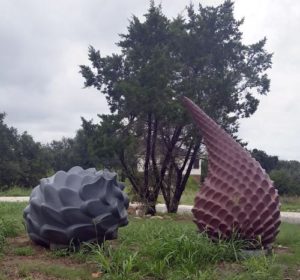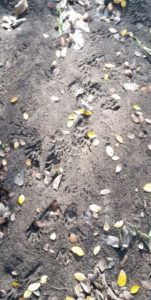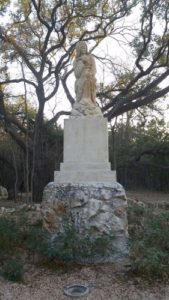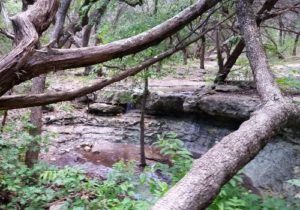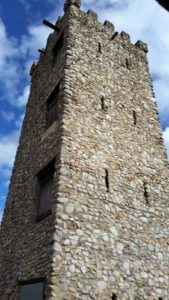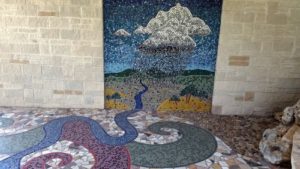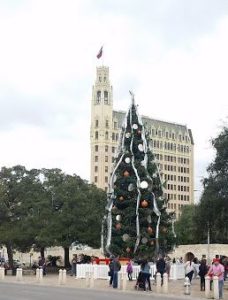Phil Hardberger Park is one of the crown jewels, if not the crown jewel, of the San Antonio Parks and Recreation system. The city purchased the family farm of the Voelcker family and have turned the site into a natural and historic landmark. Hardberger Park is 311 acres and has 19th century buildings on the site.
Hardberger Park is unusual in that it is actually two separate parks, to all appearances. The eastern part of the park has an entrance on Blanco Road and seems (to me at least) to be the more heavily visited of the parks. The eastern side has, in addition to the usual walking paths and playground, the picnic pavilion and the larger of the two dog parks. The western half of the park has an entrance on Northwest Military Highway and has, in addition to the usual walking paths and playground, the Phil Hardberger Urban Ecology Center.
The west side also has an art installation, “Golden Age” by Anne Wallace, which uses reflective metal to simulate the appearance of a wildfire on the prairie area behind the Urban Ecology Center. Personally, I think that Wallace miscalculated the height of the grasses in the prairie, her explanation of the work reads, in part, “As Hardberger Park’s restored grassland matures, the gold will appear to hover just above the prairie, using the sun and wind to bounce light off the tops of the grasses,” except that by now, the gold is buried within the grasses for most of the year. I wonder if it’s too late to raise the poles holding the circles up another three to six inches . . .
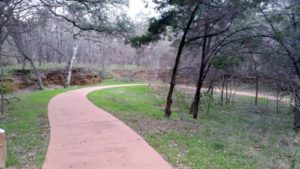
Alex and I have explored the eastern side of the park pretty thoroughly. If you are in San Antonio and are starved for some greenery, there is a lovely corner of the Geology Trail that is really vibrant in the springtime. We have spent more time but done less exploring on the western part of the park, because there are a lot more paths over there. Somehow, since Hardberger is one of the closest parks to my home, we only go there when we’re out of ideas on where to go, and since between the heat and the fact that there just aren’t many people out there, we tend to do just a short walk and then hop across the street to pick up groceries (as I write this, the western entrance is across the street from the Alon Market HEB supermarket; I make no promises that the supermarket will be there whenever you’re reading this).
I mentioned earlier that there are two halves of the park with separate entrances on different streets. The halves of the park are separated by Wurzbach Parkway, a four-lane highway with a 50 mile per hour speed limit. So it’s cross-able, but it can be something of an adventure getting from one side to the other. The plan is to add a bridge joining the two halves. And the bridges that are on the Howard W. Peak Greenway System are very nice, and would serve for the purpose of getting visitors safely across. That’s not the plan, however. The plan is for a $25 million bridge that would be 150 feet wide and have enough native greenery on it that animals wanting to cross from one side to the other will be encouraged to use it rather than risk crossing the road as well. At the moment, it looks like voters will be voting on a bond to raise $15 million of this money in May 2017. Will the bond pass? After the November 2016 elections, who knows? Will the Hardberger Park Conservancy be able to come up with their share of $10 million? I don’t know that either. If I ever do find out, I’ll let you know.
Update: 3:10 p.m. Actually you can no longer cross Wurzbach Parkway. They’ve put up a Jersey barrier. Unfortunately, this is not a barrier made of jersey material (which would be easy to move aside and get through) but is, in fact, a 3.5-foot-high cement wall. As a result, the only way from one side to the other is to drive until when (if?) they build that bridge.

